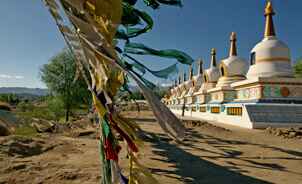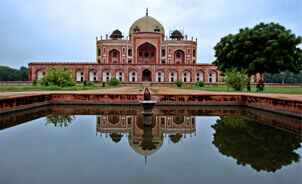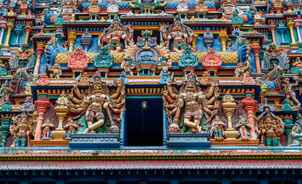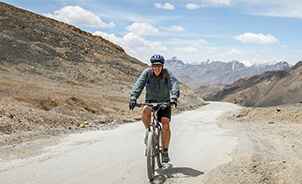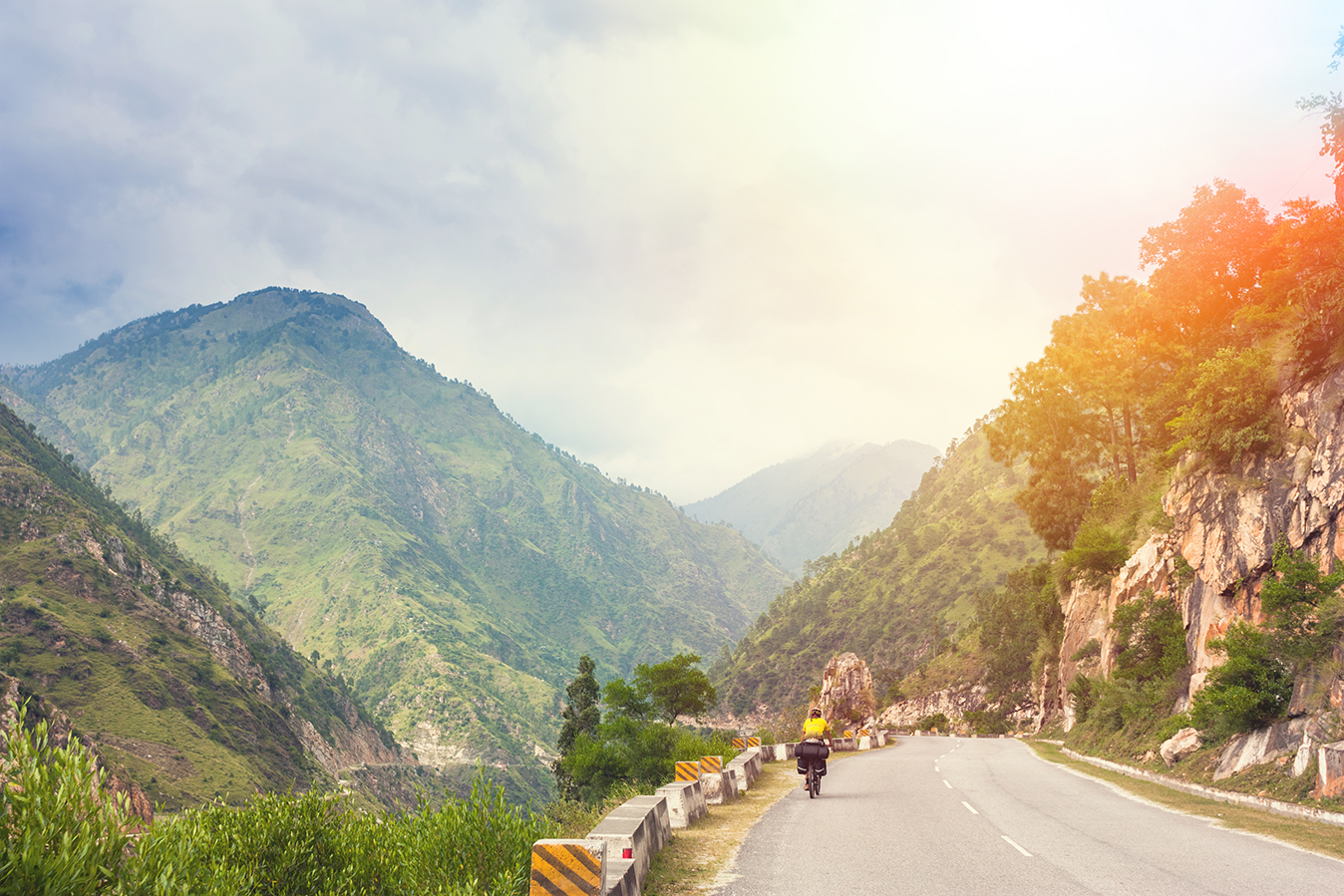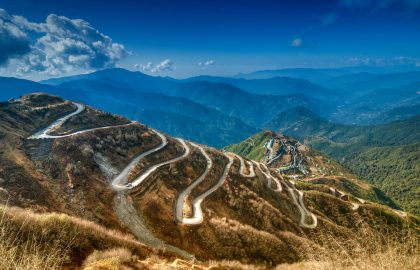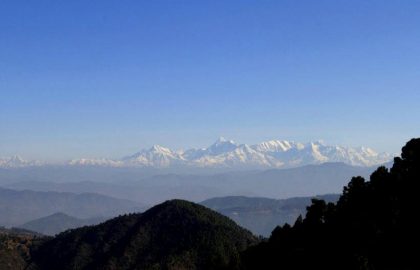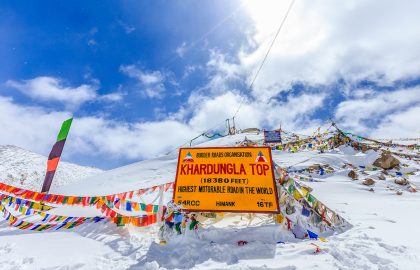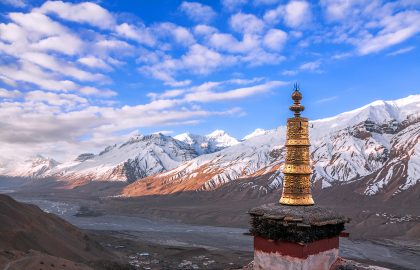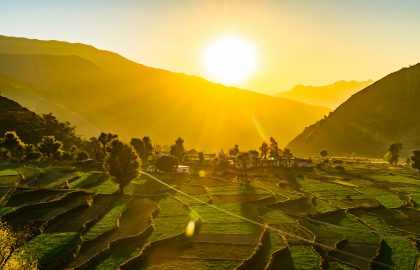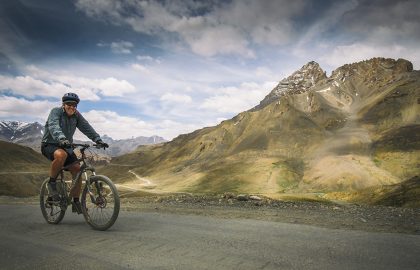What better challenge can a hardy cyclist ask for other than to scorch the best biking trails in Himalayas? And which other Himalayan biking trip can give him/her the spiritual and sensual high of Buddhist monasteries and aromatic tea gardens than Sikkim cycling tour!
The northeast of India is a remarkably different place than north India, despite both being cut through by the mighty Himalayas. The kind of arid, high-altitude Himalayan cycling trails that Ladakh and Spiti in the north throw up can leave you gasping for breath and clutching at oxygen cans, SPF-100 sunscreen lotions, and even Diamox pills to ward off that disorienting mountain sickness. Only for the rough, sturdy, and persevering are these Himalayas cycling adventures in north India.
Now pan your gaze a couple of thousand kilometres to the east and what you see is a topography a lot more genial, amiable, and even seducing to a cyclist who wants to enjoy cycling in the Himalayas without feeling beat-up, run-down, and worn out by sky-scraping mountain passes, harsh climate, and thin air of the Himalayan mountains.
The lay of the Himalayas in the northeast is greatly suited to pleasure mountain biking. The Himalayan biking trails here barely rise above 2000 meters, as opposed to 5000 meters in Ladakh. Instead of dry, arid, bitterly cold conditions of north India, lush forests, pristine lakes and sprinkling waterfalls liven you up in the Himalayas cycling tour of Sikkim. For every uphill slog – and there are quite a few to test your biking mettle – there is a downhill breeze that sends you freewheeling through a picturesque landscape, with the high, snow-capped peaks of the mighty Himalayan range rising in the distance.
Sikkim biking trip puts you right in the foothills of the eastern Himalayas and winds its way slowly towards the toe of the third highest mountain in the world, Kanchenjunga.
Slowly, because there’s pretty much to do and plenty of places to visit on the way.
For one, you never run out of Buddhist monasteries while cycling in Sikkim. Different religions and mysticism attached to them interest me. I follow a simple credo: respect all religions, and fight for none. And the Buddhist religion with its message of peace and compassion and its tradition, lore, legends, prayers, rituals, arts and architecture is rich and deep enough to keep any spiritual eager-beaver – like yours’ truly – intrigued.
Take, for instance, the legend of the three holy lamas who travelled from Tibet to India in 1641 to anoint the first king of Sikkim, which reminds me of the three magi following the star of Bethlehem to pay adoration to baby Jesus in The Bible. Or the myth of the lake Khecheopalri near Kanchenjunga whose waters are said to possess wish-granting powers. But what I was looking forward to the most was a traditional ritual performed during the Bumchu Festival at the Tashiding monastery where a barrel of holy water is opened every year and the level of the water helps to predict the year to come.
To cut the long story short, there’s hardly a day on this Himalayas cycling holiday when you don’t visit a monastery or a sacred site. I usually desist prattling out lists, but some of the monasteries we visited were: Rumtek monastery (the biggest monastery in Sikkim), Tashiding monastery (the most sacred one in Sikkim), Pemayangste monastery (known for the asceticism of its monks).
In each one of these Buddhist holy temples, we came upon something fascinating, be it the Thangka paintings, ancient relics of Karmapas (Buddhist religious leaders), idols and sculptures rich in colour and ferocity of expression, uniquely decorated architecture and the prayer ceremonies with their chanting and beating of the drums. There’s no denying that a bit of the zen calm and equanimity did rub off on us, and the constant chatter and squabble in our Sikkim mountain biking group did give way to quiet moments of reflection and introspection, but not for long.
For no sooner did these monuments of spiritual tranquillity fall out of sight than equanimity fizzled out of our minds and we were our usual back-slapping, bantering, chattering, gossiping selves again. Spirituality just as soon gave way to sensuality on our visit to the Temi Tea Garden, a sprawling tea estate that produces some of the finest quality tea in the world. It’s quite a sight to see hundreds of workers hunched over the dense green shrubs and picking tea leaves. They didn’t as much as turn to look at us as we passed by, perhaps too used to the visitors from a different world of luxury living.
Our Sikkim biking adventure group was treated to a guided tour of the tea estate and shown into the tea processing area where different varieties of tea were laid out for drying. Tea leaves, as we figured out, don’t smell anywhere close to the processed tea we get in air-tight packs and containers in the cities. And only a person gifted with the finest nose can pick out the difference between varieties of tea leaves. To me, they smelled pretty much the same.
The only bummer on our Northeast India biking tour was that we missed the ritual of oracle at Bumchu festival at Tashiding monastery. By the time our Himalayan cycling tour got there, the water barrel had already been prised open and prediction of a good year made. That was really disappointing – I mean not the prediction, but our missing out the oracle ceremony.
Not to be disheartened, we made the most of our visit to the wish-granting lake, where each one of us took several turns in making wishes until, I’m sure, we pretty much ran out of ideas.
Whether or not our wishes will be granted remains to be seen, but if anyone had wished for a rollicking time, we had ample of it at the end of our cycling trip in Indian Himalayas during the ride in the narrow gauge toy train of Darjeeling Himalayan railway. Chugging at a slow clip, the train wound its way up the hill through small villages and the most gorgeous landscape to the highest railway station in India, named Ghoom.
That pretty much was the climax of our cycling tour of Himalayas in Sikkim.

